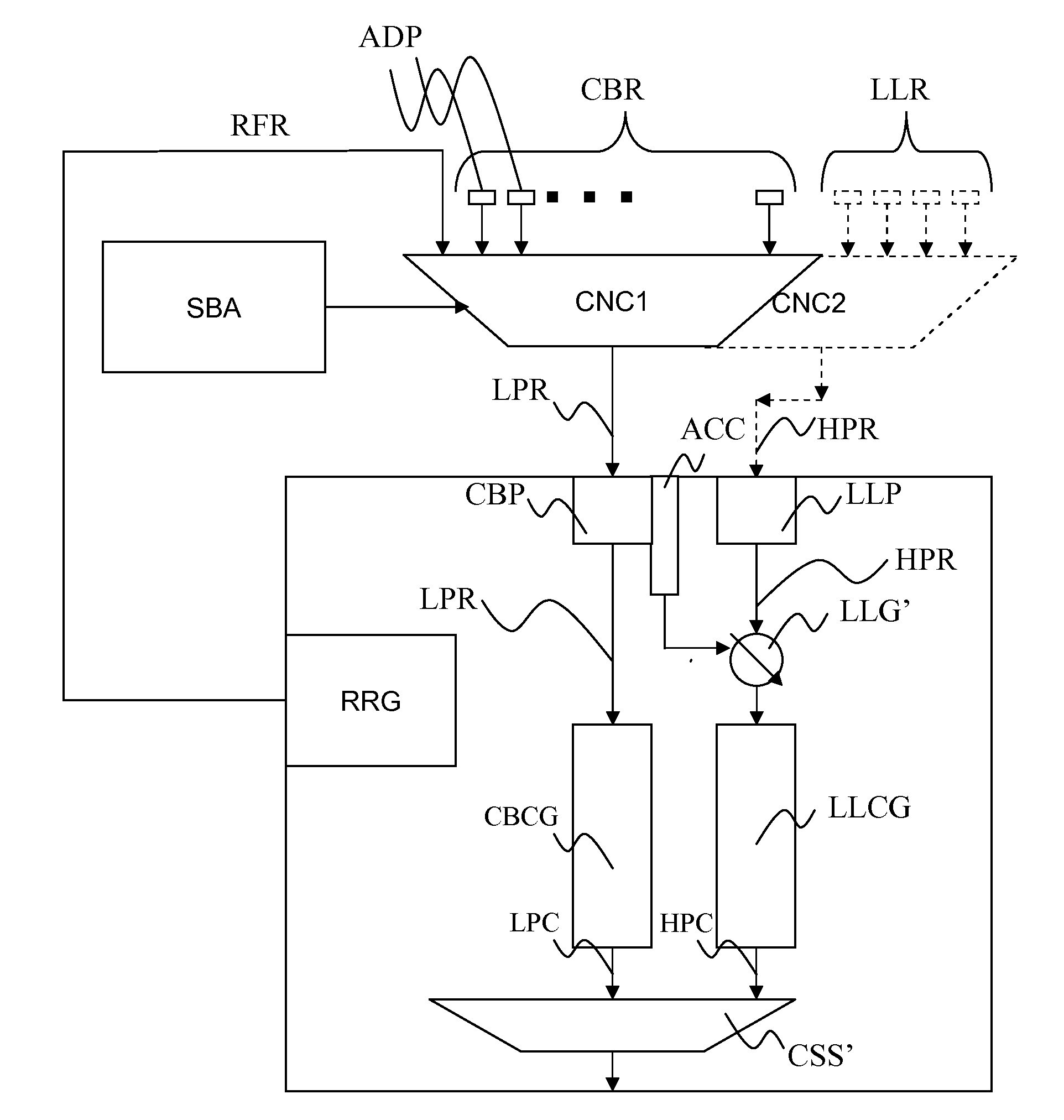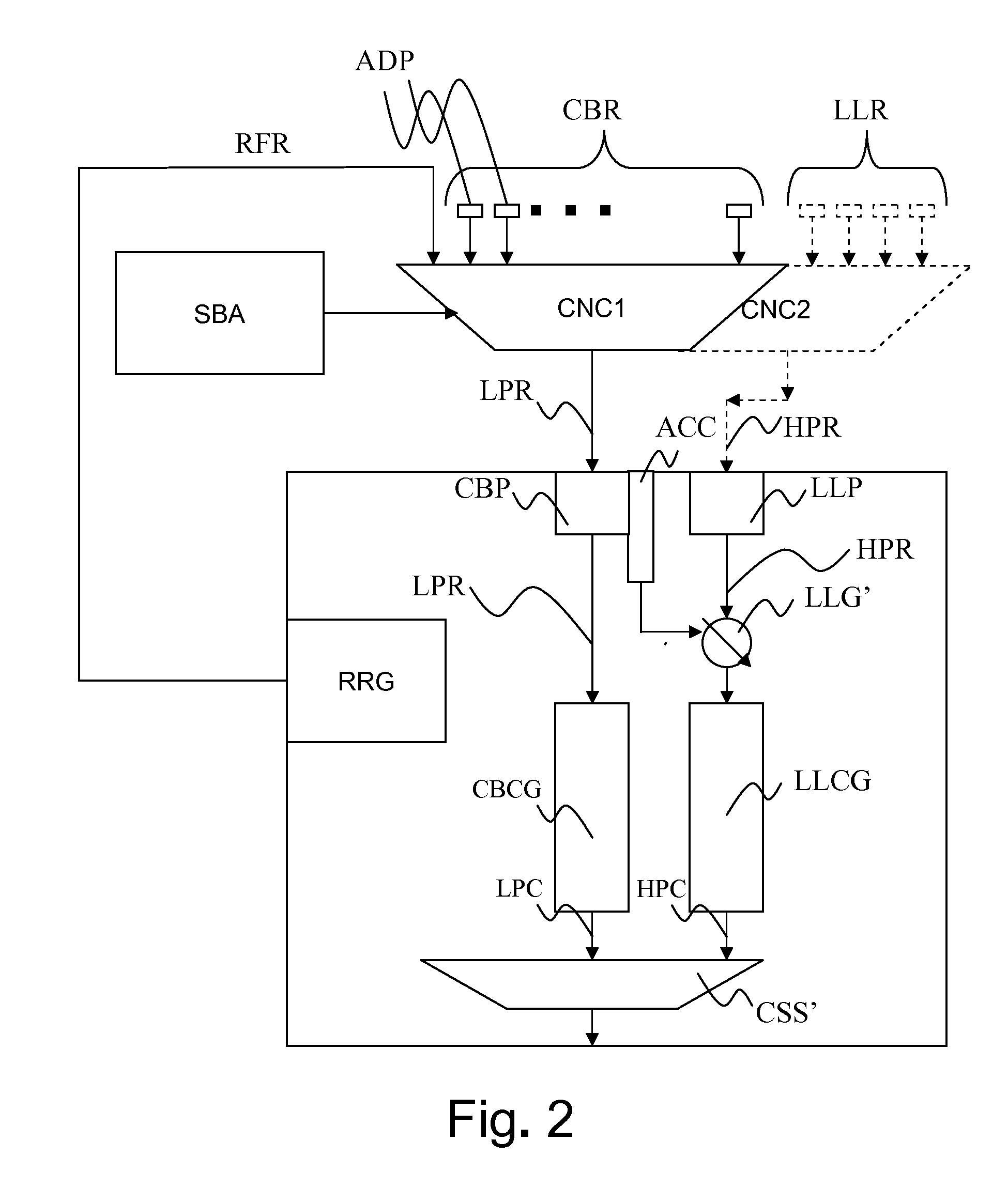Memory controller with external refresh mechanism
a memory controller and refresh mechanism technology, applied in the field of memory controllers, can solve the problems of low debugging and system integration effort, limited memory access bandwidth, and limited number of pins, and achieve the effect of simplifying internal arbitration
- Summary
- Abstract
- Description
- Claims
- Application Information
AI Technical Summary
Benefits of technology
Problems solved by technology
Method used
Image
Examples
Embodiment Construction
[0077]The invention aims at providing a memory controller for a System-on-Chip in which an off-chip volatile memory is shared amongst a plurality of agents. The agents need access to the memory at different moments in time. Such access must be controlled. Multiple requests may occur simultaneously of which some requests have a higher priority (because the operation involved is more critical in terms of latency) than others. For other requests latency is less important, but bandwidth guarantees are more important. Such requests may typically be serviced later when there are no higher priority requests, i.e. arbitration is required. This arbitration scheme is rendered even more complicated because of refresh commands, which are necessary in order to let the volatile memory keep its data. Most of the time the refresh commands are not time critical and may get the lowest priority. However, if enough time has lapsed (depending on the memory used) the refresh command may become critical a...
PUM
 Login to View More
Login to View More Abstract
Description
Claims
Application Information
 Login to View More
Login to View More - R&D
- Intellectual Property
- Life Sciences
- Materials
- Tech Scout
- Unparalleled Data Quality
- Higher Quality Content
- 60% Fewer Hallucinations
Browse by: Latest US Patents, China's latest patents, Technical Efficacy Thesaurus, Application Domain, Technology Topic, Popular Technical Reports.
© 2025 PatSnap. All rights reserved.Legal|Privacy policy|Modern Slavery Act Transparency Statement|Sitemap|About US| Contact US: help@patsnap.com



